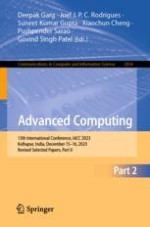The two-volume set CCIS 2053 and 2054 constitutes the refereed post-conference proceedings of the 13th International Advanced Computing Conference, IACC 2023, held in Kolhapur, India, during December 15–16, 2023.
The 66 full papers and 6 short papers presented in these proceedings were carefully reviewed and selected from 425 submissions. The papers are organized in the following topical sections:
Volume I:
The AI renaissance: a new era of human-machine collaboration; application of recurrent neural network in natural language processing, AI content detection and time series data analysis; unveiling the next frontier of AI advancement.
Volume II:
Agricultural resilience and disaster management for sustainable harvest; disease and abnormalities detection using ML and IOT; application of deep learning in healthcare; cancer detection using AI.
